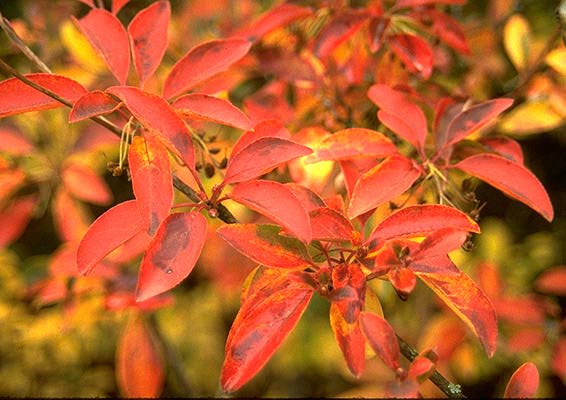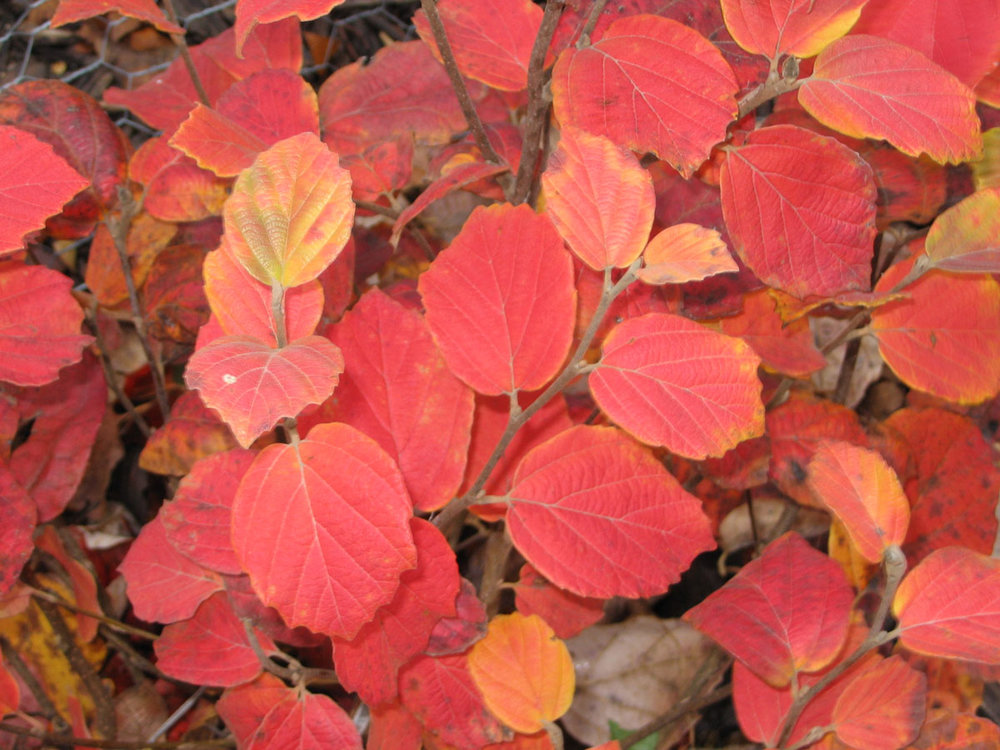Mike Ruggerio, one of my favorite teachers from NYBG, basically knows everything about anything related to trees, shrubs, perennials, annuals and bulbs. His talks are always both funny and fascinating – you never fail to learn about a million new things. And you long to see what his own gardens are like!
This particular talk was on new perennials – new cultivars that fit his definition of a perennial – “a plant that comes back after more than two years” - meaning they are cold-hardy, adaptable, easy, beautiful and for the most part long-blooming – many also deer resistant.
I’ve chosen a few that I love too, or that I’m definitely going to try.
- Achillea ‘Oertel’s Rose’ (yarrow) is a lavender-pink, gentle form of yarrow – a nice alternative to golden yellow that fits in well with the purple/white/pink/chartreuse/burgundy garden. I love the fresh foliage of yarrow in the spring – it’s one of the earliest. BUT it’s a dry meadow plant – it won’t be nice if you don’t have the right conditions.

- Actaea ‘Hillside Black Beauty’ and ‘Black Negligee’ (bugbane) are dark-foliaged cultivars of the green-leaved species. Bugbane is wonderful in shade, with mounds of almost-black foliage and fragrant white wand-like flowers rising up several feet above the foliage in autumn. It’s an excellent back-of-the-border choice for your shade garden. The newest cultivar ‘Black Negligee’ has foliage that is more purple than black – we’ll see if we can get better photos this season that show it’s purple-ness. ‘Black Negligee’ typically grows to 4-5’ tall and is a noteworthy addition to the garden for its deeply-cut, dark purplish-black leaves on branched, dark stems. The foliage has a lacy effect, hence the cultivar name, and makes an effective accent throughout the growing season.
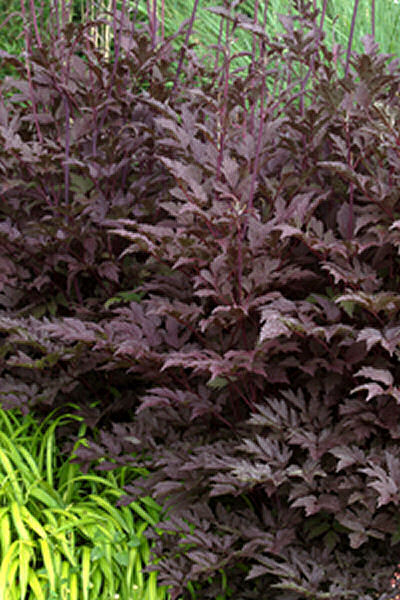
Black Negligee
- Corydalis lutea (yellow corydalis) seems to have it all if you’re in the market for a self-seeding spreading deer-resistant ground cover for shade that flowers from May till frost. It’s easily grown in average, medium, well-drained soil in part shade to full shade. Corydalis doesn’t tolerate wet feet, and wet soils in winter can be fatal. It forms a mound of ferny, medium green foliage to 15" tall and 18" wide and produces bright yellow flowers. It’s great for shaded rock gardens or border fronts and forms a nice ground cover in shady woodland areas. Wear gloves – the sap is very irritating.
- Echinacea purpurea ‘Fragrant Angel’ (coneflower) has taken over as “best white coneflower”. It’s a pure white color that stays white and it’s also quite fragrant. Don’t plant it if you have groundhogs – they’ll come from far and wide and eat every bite on the first day.
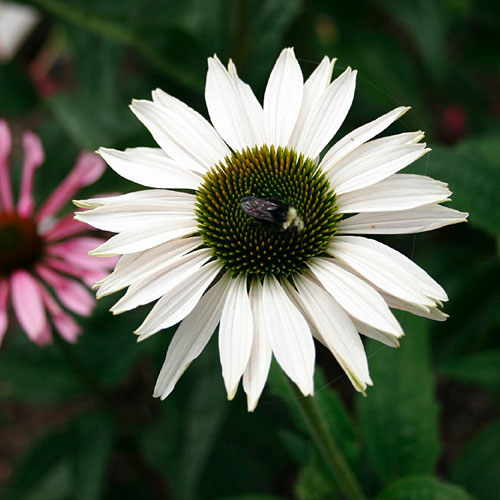
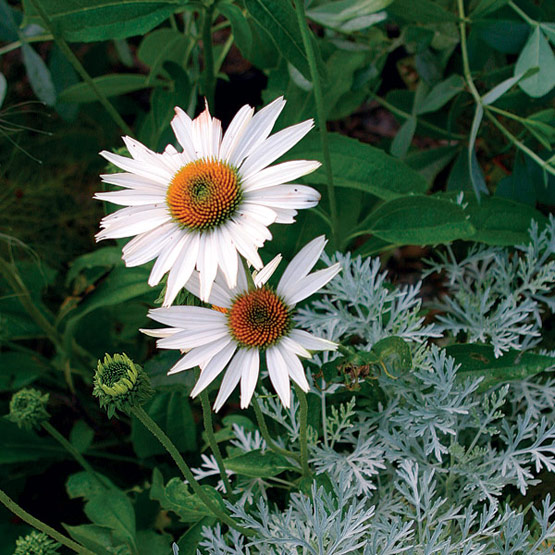
- Hemerocallis X ‘Barbara Mitchell’ is his favorite daylily – a “true pink” flower 6” wide. He also enthused about H. X ‘Bill Norris’, a golden daylily that grows 4 ft tall.

Hybrid daylily 'Barbara Mitchell'

Hybrid Daylily 'Bill Norris'
- For those of you who don’t already know about Geranium macrorrhizum (bigroot geranium), here’s another shade plant/groundcover that is deer-resistant, has either white or pink flowers, spreads enthusiastically by runners, has a nice fall foliage color and is semi-evergreen in our area. It flowers in May – June, and after that is just a mound of foliage.


- Another geranium that he mentioned in passing is one of my new favorites – Geranium X ‘Midnight Reiter’ (cranesbill) – it has purplish-black leaves and dusky blue-violet flowers. It goes with everything, and, like most cranesbill, spreads nicely.
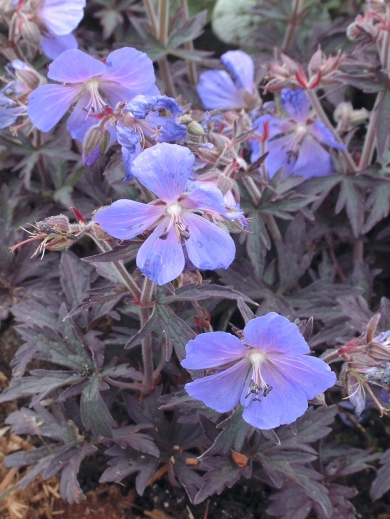

- His favorite new aster cultivar, Aster tataricus ‘Jin-Dai’ (tatarian aster), a full-sun standout that blooms in October when basically nothing else is flowering. ‘Jin-Dai’ is a compact cultivar (believe it or not!), typically growing 3-4' tall. (The species may reach 6-7' tall). Distinctive almost tobacco-like basal leaves are up to 18" long and 5" wide – interesting foliage for the spring garden. Dense and abundant blue flowers with yellow centers appear in autumn on rigid stems. This late bloomer doesn’t need pinching to control height and doesn’t flop (i.e. doesn’t need staking) as long as it’s in full sun and usually blooms until the first frost. Added bonus - attractive to butterflies!


